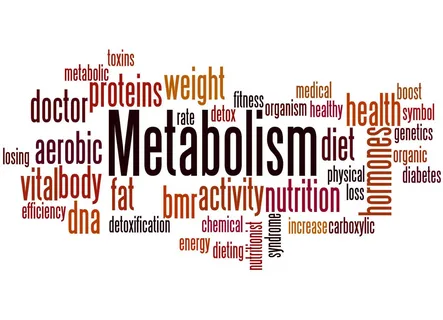Understanding Metabolic Confusion
The Basic Concept
Metabolic confusion involves alternating between high-calorie and low-calorie days, or varying caloric intake over a set period (e.g., weekly or monthly). This strategy is thought to “confuse” the metabolism, keeping it active and avoiding the typical slowdown associated with prolonged calorie restriction diets.
Historical and Scientific Basis
The concept draws loosely on the feast-famine cycles our ancestors might have experienced, where caloric intake was inconsistent and dependent on availability. Some contemporary research suggests that varying caloric intake could help maintain a higher basal metabolic rate (BMR), the rate at which the body burns calories at rest. However, comprehensive studies directly linking metabolic confusion with long-term weight loss success are limited.
How Metabolic Confusion Is Implemented
Caloric Cycling Models
Weekly Cycles
Alternating between high-calorie days and low-calorie days throughout the week. For instance, a person might consume 2000 calories on five days and 1500 on two days.
Monthly Cycles
Some plans extend the cycling over a month, with perhaps three weeks of lower calories followed by a week of higher caloric intake.
Planning Meals
The success of metabolic confusion diets often hinges on meticulous meal planning. On high-calorie days, the focus is generally on increasing overall intake, especially from proteins and healthy fats, while on low-calorie days, the emphasis might shift towards fiber-rich vegetables and lean proteins to promote satiety.
Potential Benefits of Metabolic Confusion
Avoidance of Metabolic Plateaus
The primary proposed benefit of metabolic confusion is the avoidance of metabolic adaptation, where the body reduces its energy expenditure in response to reduced calorie intake. By frequently shifting calorie levels, the body may maintain a higher rate of calorie burning.
Psychological Benefits
This diet may reduce the psychological strain associated with continuous calorie restriction, providing relief on higher-calorie days and making the regimen more sustainable over the long term.
Flexibility
The metabolic confusion diet does not restrict any food groups, which might make it more flexible and appealing compared to more restrictive diets. This can lead to better adherence and overall satisfaction.
Potential Drawbacks and Risks
Lack of Strong Scientific Support
Despite anecdotal success stories, there is a lack of robust scientific evidence to definitively prove that metabolic confusion leads to more effective weight loss than consistent caloric restriction.
Nutritional Imbalance
Without careful planning, high-calorie days can lead to overconsumption of unhealthy foods, potentially leading to nutritional imbalances and other health issues.
Complex Planning
This diet requires careful planning to ensure nutritional balance and appropriate caloric intake, which can be time-consuming and challenging for some people.
Common Implementation Strategies
Use of Apps and Tools
Many dieters use apps or online calculators to track their daily calorie intake and ensure they adhere to the cycling pattern of their chosen metabolic confusion plan.
Professional Guidance
Working with a dietitian or a nutritionist can help tailor the metabolic confusion diet to individual needs, ensuring that all nutritional requirements are met.
Community Support
Online forums and support groups can provide motivation and accountability, which are crucial for long-term adherence to any diet plan.
FAQs about Metabolic Confusion
Is metabolic confusion scientifically proven to work?
While the theory is plausible and supported by some preliminary studies, there is not yet a strong body of evidence proving that metabolic confusion is more effective than other dieting methods over the long term.
Can anyone try metabolic confusion?
Most healthy adults can try metabolic confusion, but it may not be suitable for everyone, especially those with medical conditions requiring consistent meal patterns (like diabetes). Always consult a healthcare provider before starting any new diet plan.
How long should I follow a metabolic confusion diet?
The duration can vary based on individual goals and responses. Some might follow it for a few months, while others may see it as a long-term approach to eating.
What should I eat on high-calorie days versus low-calorie days?
High-calorie days should focus on nutrient-dense foods, increasing portions of proteins, healthy fats, and complex carbohydrates. Low-calorie days should focus on vegetables, lean proteins, and foods high in fiber.
How much weight can I expect to lose on a metabolic confusion diet?
Weight loss can vary based on individual metabolism, the specific calorie cycling pattern used, initial body weight, and adherence to the diet.
Is exercise recommended while following a metabolic confusion diet?
Exercise is a beneficial addition to any diet plan, including metabolic confusion. It can help accelerate weight loss and improve overall health.
What are the signs that metabolic confusion is not working for me?
If you experience fatigue, prolonged hunger, or are not losing weight after several weeks, it might be a sign that the diet is not suitable for you. Consult with a healthcare professional to adjust the diet or explore other options.
Conclusion
Metabolic confusion offers a flexible, potentially less psychologically taxing way to approach weight loss. While it promises to keep the metabolism active through caloric cycling, definitive scientific proof of its superiority over other diet methods is still lacking. As with any dietary approach, individual experiences can vary, and it’s essential to consider personal health conditions and lifestyle before starting. Always consult with healthcare professionals to tailor the diet to your specific needs and ensure it is done safely and effectively.
- 8 Signs and Symptoms of Vitamin A Deficiency - April 20, 2024
- Bourbon vs. Scotch Whiskey: What the Difference? - April 20, 2024
- What Is Metabolic Confusion and Does It Work? - April 20, 2024




